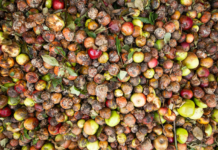
This is the second article in a series of 10 articles that will present insights into the challenges faced while packing powders. In the first article in the December 2023 issue of Packaging South Asia, we looked at the challenges faced while packing powders. In the subsequent articles, we will look at individual elements that need to be managed to achieve desired outcomes. In this article, we try to understand the characteristics of powders and their implications on the selection and management of packaging solutions.
Powder filling is a versatile process employed across various industries, each with its unique set of challenges and requirements. The successful implementation of powder filling systems depends significantly on understanding powders and their characteristics. In this article, we delve into the different types of powders and their implications for the powder-filling process.
-
Understanding Powder types
Powders come in a wide array of forms, each presenting distinct challenges during the filling process. A simple way to classify them would be based on their flow property. This has a strong influence on how they have to be stored, transported, and filled.
- Free-Flowing Powders – These powders have excellent flow characteristics, making them relatively easy to handle during the filling process. Examples include sugar, salt, suji, certain pharmaceutical powders, and granular products.
- Non-Free-Flowing Powders – Conversely, some powders exhibit poor flow characteristics, they need to be assisted for moving and filling generally with a screw. This category includes products like flour, milk powder, cocoa, and certain chemical powders. Specialized equipment and techniques are often required for efficient filling.
- Hygroscopic Powders – Powders with a tendency to absorb moisture can pose challenges in the filling process. Maintaining the right environmental conditions and storing in containers that offer barrier protection is crucial to preserving the property of these powders. Moreover, a change in moisture percentage can lead to a change in the flow property and bulk density of these powders. Lumping and sticking to surfaces are also some of the challenges they present.
- Abrasive Powders – Powders, such as certain minerals or metal powders, can be abrasive and may cause wear and tear on equipment over time. Selecting durable materials and implementing proper maintenance practices are essential in handling these.
- Agglomerated Powders – Agglomeration of powder has many benefits. The process enables increasing the particle size of the powder and some of the advantages are:
- Improved flowability
- Improved solubility
- Reduction in dust while packing
- and, Easier packing operation.
This is an additional process and hence may increase the cost of the powder.
-
Key Powder Attributes – Bulk Density and Differential Flow Rate
Two crucial attributes that significantly influence the powder-filling process are:
- Bulk Density – This refers to the mass of powder per unit volume. Understanding the bulk density of a powder is essential for determining the appropriate filling equipment and optimizing the filling process. Higher bulk-density powders may require specialized equipment with increased power to ensure accurate and consistent filling.
- Differential Flow Rate – The rate at which powder flows under the influence of gravity when kept at angle greater than its angle of repose. The angle of repose itself indicates the flow property of the powder. The differential flow rate is a measure of this flowability. Powders with low differential flow rates may require additional assistance, such as vibration or agitation, to ensure a smooth and continuous filling process.
-
Powder Storage Guidelines
Proper storage of powders is essential to maintain their quality and properties. Bulk density is an important criterion for ensuring fill efficiency. Most powders have a delta of about 20% between loose and tap bulk density. Most filling processes require constant bulk density. How we maintain the loose bulk density is an issue that needs to be addressed. Some factors to consider include:
- Environmental Control – Store powders in a controlled environment, avoiding exposure to extreme temperatures and humidity. This is particularly crucial for hygroscopic powders to prevent clumping. Avoid flexible bags of powders being stacked directly on top of one another if maintaining the bulk density is important for you.
- Container Integrity – Use airtight containers to prevent moisture ingress and protect powders from contamination. Ensure that containers are made of materials compatible with the stored powder.
- Segregation Prevention – Store powders in a way that prevents segregation. This is especially important for blends where different particle sizes may settle at different rates.
- Labeling – Clearly label containers with information such as powder type, batch number, and storage conditions. This aids in proper inventory management and traceability.
- Regular Inspection – Periodically inspect stored powders for any signs of caking, clumping, or changes in color or texture. This proactive approach allows for timely corrective measures.
- Guidelines for Powder Conveying
Efficient powder conveying is crucial for maintaining the integrity of the product and the smooth operation of the filling process. Consider the following guidelines –
- Equipment Selection – Choose conveying equipment that is suitable for the characteristics of the powder. Pneumatic conveyors, screw conveyors, and vibratory conveyors are common options, each with its advantages depending on the powder’s flowability and sensitivity.
- Minimize Air Velocity – In pneumatic conveying systems, control air velocity to prevent excessive turbulence, which can lead to powder degradation or separation. Properly size conveying pipes and use gentle bends to maintain a consistent flow.
- Moisture Control – If conveying hygroscopic powders, take measures to control moisture levels in the conveying air to avoid clumping. Use dry air and consider incorporating moisture removal systems. Use enclosed conveyors.
- Avoid Segregation – Select conveying equipment and methods that minimize the risk of powder segregation. This is especially critical for powders with varying particle sizes or densities.
- Cleaning and Maintenance – Regularly clean conveying equipment to prevent cross-contamination between different powders. Implement a maintenance schedule to address wear and tear.
-
Tailoring Equipment to Powder Characteristics
The characteristics of the powder being filled directly influence the choice of filling equipment. For instance –
- Auger Fillers – Ideal for non-free-flowing powders, auger fillers are known for their accuracy and precision in measuring and dispensing products like spices and powdered milk. They are designed to deliver a constant volume of product therefore maintaining bulk density if paramount importance. Having said this, this is not always possible, therefore a blending operation to prepare a batch of constant bulk density – say for at least 10 minutes of packaging operations – would help in filling accurately.
- Volumetric cup Fillers – Well-suited for free-flowing powders. Cup fillers can handle products that will easily move with gravity and fill a cup of predesigned volume which is then packed in a suitable container
- Gravity Fillers – Suitable for free-flowing powders, gravity fillers are a cost-effective option for products like granulated sugar or salt.
- Net Scales – A linear weighing option for free-flowing powders. When accuracy due to product cost is important, net scales are an excellent option.
- Loss in weight augers – Weighing non-free flow powders is a challenge due to the inherent characteristics of the powder. However, when the powder calls for high accuracy – loss-in-weight feeders can be used. These are ideal for larger pack weights as fill speeds tend to be on the lower side.
The powder determines how it will be conveyed and dosed, it is, therefore, important for us to understand the suitability of various types of dosers.
Summary – Navigating the Challenges of Powder Filling
In the realm of powder filling, success lies in the meticulous understanding and management of diverse powder characteristics. This article has explored the intricacies associated with different types of powders, emphasizing the significance of tailored solutions for each. From free-flowing to agglomerated, hygroscopic to abrasive, each powder type demands specific considerations throughout the filling process.
Key attributes such as bulk density and differential flow rate have been highlighted as critical factors shaping equipment selection. Auger fillers, volumetric fillers, gravity fillers, and linear weigh fillers have been introduced as specialized tools, each adept at addressing the unique challenges posed by distinct powder varieties and your requirements to fill these accurately.
Proper powder storage guidelines underscore the importance of environmental control, container integrity, segregation prevention, labeling, and regular inspection. These practices form the foundation for maintaining powder quality and ensuring seamless processing.
Efficient powder conveying, featuring equipment selection, air velocity control, moisture management, and segregation avoidance, plays a pivotal role in sustaining powder integrity during transfer.
As we delve into the intricacies of the feeding system, the focus shifts to lump prevention, vibration, agitation, humidity control, and importantly, avoiding product breakage. These aspects are crucial in guaranteeing a smooth flow of powder from the feeding system to packaging machines.
The article concludes with a spotlight on dust management — an often overlooked yet vital aspect. Controlling dust is essential for maintaining a clean and safe working environment, preventing equipment wear, and ensuring product quality.
In the complex world of powder filling, attention to detail is paramount. As industries continue to evolve, adopting innovative solutions becomes imperative. In the next installment, we will delve into the intricacies of film selection, considering the factors discussed here. Stay tuned for insights into optimizing your powder-filling process and achieving peak efficiency.
(K. Ravi is an industry veteran and expert in powder filling, specifically in flexible pouch packaging. He played a key role in establishing Hassia in India in 1998, now known as Rovema India. Ravi can be reached at ravi@raasintelli.com)
IndiFoodBev — authentic, impactful and influential
An English-language food and beverage processing and packaging industry B2B platform in print and web, IndiFoodBev is in its third year of publication. It is said that the Indian food and beverage industries represent approximately US$ 900 billion in revenues which implies more than 20% of the country’s GDP. Eliminating the wastage on the farmside can help to deliver more protein to a higher number of the population apart from generating sizable exports. The savings in soil, seeds, water, fertilizer, energy and ultimately food and nutrition could be the most immense contribution that country is poised to make to the moderation of climate change.
To improve your marketing and grow sales to the food and beverage processing and packaging industry, talk to us. Our research and consulting company IppStar [www.ippstar.org] can assess your potential and addressable markets in light of the competition. We can discuss marketing, communication, and sales strategies for market entry and growth.
Suppliers and service providers with a strategy and budget for targeted marketing can discuss using our hybrid print, web, video, and social media channels to create brand recognition linked to market relevance. Our technical writers are ready to meet you and your customers for content.
The second largest producer of fruit and vegetables in the world is continuously expanding processing capacities and delivery systems with appropriate innovative technologies. We cover product and consumer trends, nutrition, processing, research, equipment and packaging from farm to thali. Get our 2025 media kit and recalibrate your role in this dynamic market. Enhance your visibility and relevance to existing markets and turn potential customers into conversations. Ask for a sample copy of our bi-monthly in print or our weekly IndiFoodBev eZine each Wednesday.
For editorial info@ippgroup.in — for advertisement ads1@ippgroup.in and for subscriptions subscription@ippgroup.in
Naresh Khanna – 10 February 2025
Subscribe Now










